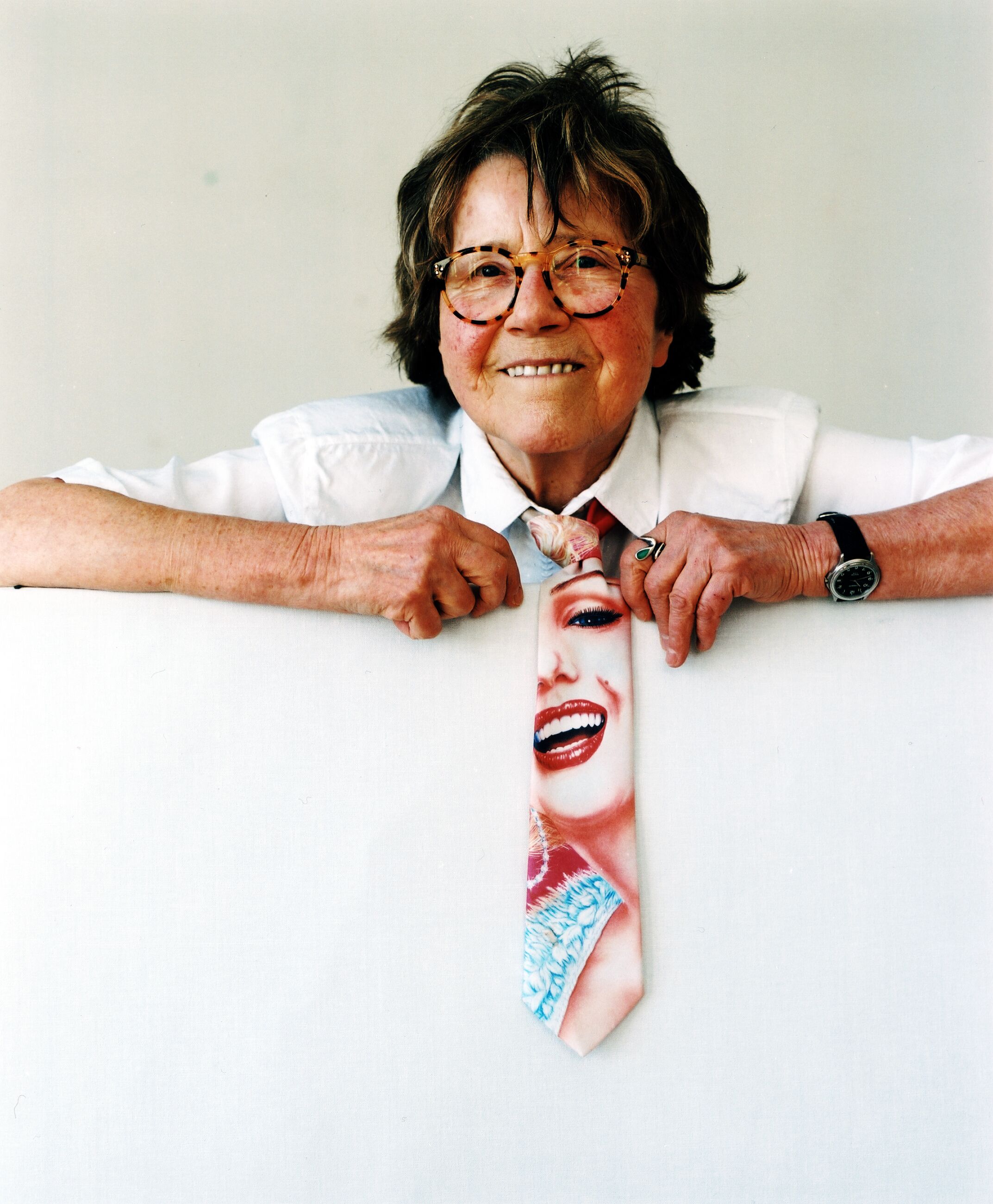
Maria Lassnig
Paintings
8 September - 2 October 2004
London
About the Artist

Maria Lassnig
Born in Carinthia in Southern Austria in 1919, Maria Lassnig’s (1919 – 2014) work is based on the observation of the physical presence of the body and what she termed ‘body awareness’, or ‘Körpergefühl’ in German. She studied at the Academy of Fine Arts in Vienna in the midst of the Second World War. Then, in post-war Europe, she quickly moved away from the state-approved academic realism in which she was trained, looking to Austria’s own avant-garde past, such as the coloration of Oskar Kokoschka and Egon Schiele’s expressionist treatment of figuration.
Her early years were marked by experiences with various ‘isms’, including artistic currents in surrealism and automatism from the late 1940s, followed by ‘art informel’ and post-cubism in the 1950s. After moving to Paris in 1960, an innovative figuration, expressive and painterly, was beginning to emerge. In the next few years, she developed narrative paintings with one or more figures, at times borrowing from technoid forms of science fiction set in absurdly caricatured scenes. Animal-like, monstrous self-portraits emerged alongside this group of works.
In 1968, Lassnig moved to New York where her artistic work once again switched direction—she turned to external realism and painted portraits, nudes and still lifes, at times combining these with her ‘body awareness’ self-portraits. Many of her paintings, drawings and watercolors were devoted to recording her physiological states through a direct and unflinching style. Utilizing contrasting colors such as greens, pinks and blues, as well as strong body shapes to give her paintings a powerful, even drastic impact, Lassnig looked to herself, a female artist in a predominantly male world, as her primary subject.
Of her artistic process, Lassnig has said: ‘I step in front of the canvas naked, as it were. I have no set purpose, plan, model or photography. I let things happen. But I do have a starting-point, which has come from my realization that the only true reality are my feelings, played out within the confines of my body. They are physiological sensations: a feeling of pressure when I sit or lie down, feelings of tension and senses of spatial extent. These things are quite hard to depict.’ Her famed portraits and self-portraits are often treated with a playful irony, even in her depictions of the aging body and psychological turmoil.
In 1980, Lassnig was awarded a professorship—with a focus on painting and animation film—at the University of Applied Arts in Vienna. As a result, her self-portraits repeatedly explored issues of overload and enforced estrangement. She then began dealing more extensively with mythological contents, with nature and ‘rural life,’ and continued her exploration of figure-ground tensions. From the late 1990s, Lassnig turned to the great existential themes with her so-called Drastic Pictures, such as the relationship between the sexes and generations, unchosen lifestyles, as well as oppression, destruction, impermanence, and death.
Portrait: Maria Lassnig in her studio, Vienna, 2007 © Monopol/Elfie Semotan 2007
Current Exhibitions
1 / 9








